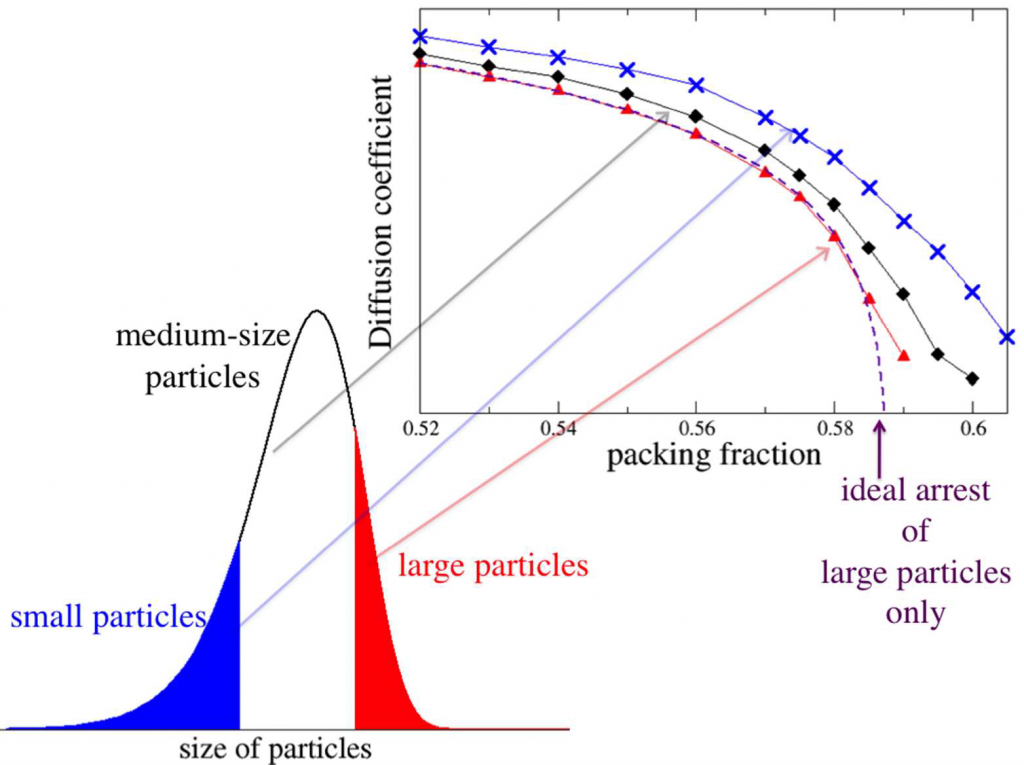DOI: 10.1039/C4SM02321H
The aim of this work was to investigate the dynamics of polydisperse hard spheres at high packing fractions φ. The effects of polydispersity and the detailed shape of the particle size distribution (PSD) were studied.
The glass transition is not fully understood despite many decades of research. The discovery that hard-spheres, sterically-stabilised polymethylmethacrylate (PMMA) colloids, underwent kinetic arrest at a packing fraction of φ = φg ≈ 0.58 led to hard sphere colloids becoming the preferred method to test mode coupling theory (MCT). This is a significant piece of work by Emanuela Zaccarelli, Siobhan M. Liddle and Wilson C. K. Poon who are the first to present simulations of a polydisperse system of hard spheres with a size distribution essentially identical to the experimental data. The findings of the authors are novel and very important, they also put forward a new interpretation of what is going on in glass transition of MCT experiments. Assumptions with regard to PSD are not made and a model as close to the experimental one as possible is designed.
Event-driven Molecular Dynamics (MD) simulations of hard spheres with different PSD were performed. Experimentally obtained PSD from ≈ 2200 PMMA particles were measured by transmission electron microscopy (TEM). N = 2309 particles were simulated with the experimental PSD, measurement noise was included to produce a realistic system representation. N = 2000 particles taken from Gaussian and top hat distributions were considered for comparison.
It was found that a mixed state of ergodic small particles and glassy large particles in a window of concentrations is present and results in a hybrid dynamical state that is fluid for a long time but shows an unusual type of ageing. The breakdown of the MCT-predictions is due to the existence of partial decoupling, which is not accounted for in the monodisperse-version of MCT. However, the results of MCT are recovered once the polydispersity is reduced. There is a non-monotonic dependence of the quality of the glass former on the polydispersity index, s. When s = 0, the system is prone to crystallization and strong glasses are formed when s = <8%. The glass transition is smeared out due to the emergence of the “ageing liquid” for higher values of s as well as for samples drawn from peaked distributions. The precise form of the size distribution is relevant, a peaked distribution that allows a distinction between small and large particles is essential but this is not the case in the top hat particle distribution.
In conclusion, at a fixed relative standard deviation of the PSD the exact shape of the PSD has little influence on the general behaviour of the dynamics, large differences between the dynamics of “small” and “large” particles are found for realistic PSD shapes.

The glass transition is smeared out in polydisperse hard spheres due to decoupling between small and large particles
Please follow the link for the full article.










